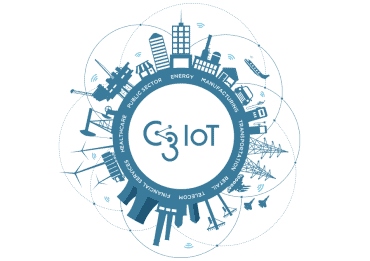
Mature digital technologies, scientific advancements, and emerging DARQ technologies will help businesses adjust to customer demand and differentiate their offerings.
COVID-19 has created historic upheaval for businesses. The opportunities, trends, and challenges of the pre-pandemic world – just a few months ago – are no longer important. Businesses are working to rapidly pivot towards a new set of priorities and adjust to a new set of challenges.
When it comes to innovation, this change is dramatic. In Accenture’s 2020 Technology Vision report, we identified innovation as a key battleground for the future. We argued that three cornerstones of innovation – mature digital technologies, scientific advancements, and emerging DARQ technologies (distributed ledgers, artificial intelligence, extended reality, and quantum computing) – would provide the tools with which businesses can adjust to customer demand and differentiate their offerings.
See also: Accenture, Intel Use AI To Save Coral Reefs
We argued that businesses will eventually be set apart by their ‘Innovation DNA’ – meaning the way they merge and combine strategies from the three cornerstones to amplify and complement their core business competencies. This is truer today than ever before.
COVID-19 catalyzes innovation
The global challenge of COVID-19 has spurred a massive innovation effort from companies, governments, universities, and individuals to fight both the virus itself and its disastrous economic consequences. As a result, it’s even more critical that businesses think about their Innovation DNA now rather than leaving it to the future.
Many organizations have been quick to recognize this requirement. In particular, we’ve seen the use of DARQ technologies accelerate beyond anything we could have expected. To help identify COVID-19 carriers and hotspots rapidly, for example, the World Health Organization has teamed up with Oracle, Microsoft, IBM, and others on HACERA’s MiPasa, a blockchain-based open data hub. Or look at Los Angeles’ Cedars-Sinai Medical Center, which is using VR simulations to train doctors to treat infectious diseases. Time and again, companies are accelerating their innovation timelines and deploying emerging technologies in new ways.
Concurrently, the pandemic is putting ecosystems through an innovation stress test. As a result of the crisis, companies are being forced to work together in new ways, and many are diving headfirst into large-scale ecosystem-wide innovation. Many restaurants, for example, have managed to stay open by teaming up with food delivery startups that connect them with customers. Applied VR, a company that uses VR for therapy services, has partnered with a medical device company to offer VR stress management programs to front-line health workers.
These new partnerships and business models have, in many cases, been born of the need to weather the pandemic. However, many of these partnerships have the potential to last long after the crisis and serve as springboards to new business models and propositions in the years ahead.
New partnerships for a new world
Indeed, in the long term, these partnerships will be essential in helping organizations adapt to the new rules of innovation emerging from the pandemic. Businesses have always had to keep pace with external change in order to survive, but the world today is changing faster than anyone could have expected. As a result, businesses need to be more flexible than ever. They need to experiment at speed and formulate resilient, agile innovation DNAs that will help insulate them from future shocks.
A range of companies are doing just that: using the pandemic as the catalyst to progress their innovation agendas. Take General Motors and Tesla, which have worked to produce key medical equipment such as ventilators, or Louis Vuitton’s owner LVMH, which is using its perfume and cosmetics production lines to make free hand sanitizer for hospitals. When the pandemic is over, companies like these will be able to meet new needs and build new capabilities faster than ever before. This is important because people’s values will likely be changed by the pandemic. Businesses that can innovate to meet these new wants and needs will be best positioned to succeed in the future.
The Tech Vision report found that the key to successful adoption of new models is collaboration. Successful business leaders will invite customers, employees, partners, and the public to build their new course for the future together. A few important trends exemplify this and underscore the importance of “Innovation DNA” include:
- The I in Experience: Leading businesses are working with customers to create digital experiences. People still want the many benefits of customization, but they are skeptical of the non-transparent methods that companies use to deliver it. They want more ownership of their data and of the experience itself. The rise of 5G and augmented reality (AR) put more pressure on leaders to make this a reality.
- AI and Me: The full potential of AI has moved beyond being a mere automation of simple tasks to being a powerful collaboration tool between human employees and machines. Successful businesses will understand the importance of context in human-machine interaction and take advantage of advances that help them collaborate on a larger scale. This will position companies to reimagine all aspects of their entire business from the ground up.
In the face of a global pandemic, the fear of failed experiments has given way to businesses innovating in bolder ways. This approach will help the world get through the crisis, and it will leave a legacy. From now on, we can expect businesses to make bigger bets on innovation and accelerate their adoption of advanced technologies. This will be good news for companies and consumers alike.





























